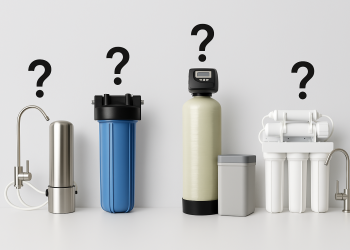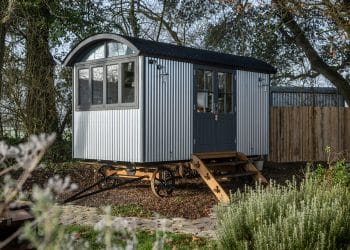Table of Contents
In the world of modern agriculture, hydroponics has emerged as a sustainable solution for growing plants without soil. A key component in this soilless cultivation is the use of grow lights. This article explores the critical role of grow lights in hydroponic systems and how they contribute to efficient and effective plant growth.
Understanding Hydroponics and the Need for Grow Lights
The Basis of Hydroponic Systems
Hydroponics is a revolutionary method of cultivating plants where soil is replaced by a water-based, nutrient-rich solution. This innovative approach enables growers to precisely manage the nutrients and water supplied to the plants. This precision often results in accelerated growth and increased yields compared to traditional soil-based methods. A key challenge in hydroponic systems, particularly in indoor environments, is ensuring plants receive sufficient light for photosynthesis.
Why Grow Lights are Essential
While outdoor hydroponic systems can often rely on natural sunlight, indoor setups usually lack adequate natural light. This is where grow lights come into play. They are indispensable in these indoor environments, functioning as an artificial sunlight source.
Grow lights provide the essential energy required for photosynthesis, ensuring that the plants develop healthily. Their usage enables indoor hydroponic systems to thrive, regardless of natural light availability, making them a critical component of successful indoor hydroponic gardening.
The Impact of Grow Lights on Plant Growth in Hydroponics
Optimizing Light Spectrum for Growth
Different types of grow lights offer varying spectrums of light. For instance, LED grow lights can be tailored to emit specific wavelengths conducive to plant growth. These wavelengths are crucial for chlorophyll absorption and influence various growth phases, from vegetative growth to flowering.
Energy Efficiency and Sustainability
Grow lights, especially LED grow lights, are known for their energy efficiency. This aspect is crucial in making hydroponic systems sustainable and cost-effective. By using less energy, they reduce the overall environmental footprint of hydroponic farming.
Selecting the Right Grow Lights for Hydroponic Systems
Choosing the appropriate grow lights for your hydroponic setup is a pivotal decision that can greatly influence the success of your indoor garden. Here, we delve deeper into the types of grow lights available and the critical considerations to keep in mind when making this essential choice.
Types of Grow Lights
In the world of hydroponics, you have a variety of grow lights to choose from, each with its own set of advantages and applications. The three primary types are:
LED (Light Emitting Diode) Lights: LEDs have gained prominence as a top choice among hydroponic enthusiasts. Their popularity stems from their exceptional efficiency and long lifespan. LED grow lights produce a balanced spectrum of light, making them versatile for various growth stages of plants.
HID (High-Intensity Discharge) Lights: HID lights, such as Metal Halide (MH) and High-Pressure Sodium (HPS) lamps, have been staples in the hydroponic industry for years. They emit intense light, making them suitable for flowering plants during their blooming phase.
Fluorescent Lights: Fluorescent tubes, particularly T5 and T8 bulbs, are an economical choice for hydroponic growers. They are often used for seedlings and young plants due to their lower light intensity.
Considerations for Grow Light Selection
When determining the right grow lights for your hydroponic garden, several crucial factors should guide your decision:
Light Intensity: The intensity of light emitted by the grow lights must match the needs of your plants. Different plants require varying levels of light intensity for optimal growth. Ensure that the selected grow lights can deliver the required intensity.
Light Duration: The duration of light exposure, known as the photoperiod, is vital. Some plants need longer periods of light, while others thrive with shorter cycles. Be sure to synchronize the light duration with the specific requirements of your plants.
Light Spectrum: Different growth stages necessitate specific light spectra. For instance, leafy greens predominantly benefit from blue light, while flowering plants require more red light. LED grow lights often offer customizable spectrums to cater to these diverse needs.
Energy Efficiency: Consider the energy consumption of your chosen grow lights. LED grow lights are renowned for their energy efficiency and can result in cost savings over time.
Heat Management: Efficient heat dissipation is crucial, especially in enclosed indoor spaces. Ensure that the selected grow lights come with adequate heat management mechanisms to prevent overheating.
Budget: Your budget will play a role in your selection. While LED grow lights may have a higher upfront cost, their long-term efficiency and durability can offset the initial investment.
Plant Variety: Different plant species have unique light requirements. Leafy greens, herbs, and fruiting plants may all demand distinct lighting conditions. Tailor your choice to suit the specific plants you intend to grow.
Best Indoor Hydroponic System with Grow Lights
Among all indoor hydroponic systems with grow lights, the Spider Farmer Indoor Hydroponic Grow System stands out for its impressive features and benefits, making it a noteworthy choice for hydroponic gardening enthusiasts.
High-Performance LED Grow Light:
The Spider Farmer hydroponic growing system is equipped with a 36W LED light that effectively simulates the full spectrum of sunlight. This light provides a balanced combination of blue, white, warm white, and red light, which is essential for promoting healthy plant growth.
Efficient and Convenient:
This hydroponic system features a unique 6L large water tank design, offering ample growing space and root expansion. One of its standout features is the convenience it offers. You only need to add water once every 30 days, saving you time and effort. Additionally, the system incorporates a silent and intelligent water pump that runs every 30 minutes, maintaining a regular water flow while operating at an impressively low noise level (less than 20 decibels).
Adjustable Light and Timing:
The Spider Farmer hydroponic grow system provides precise control over light intensity and timing. It offers 4 timing cycle modes (4/8/12/16 hours) and 6 dimming options (10%/20%/40%/60%/80%/100%). This versatility allows you to tailor the lighting conditions to match the specific growth stages of your plants. By optimizing photosynthesis and reducing energy consumption, this system promotes healthy and sustainable plant growth.
Conclusion
Grow lights play an indispensable role in the success of hydroponic systems, especially in indoor settings. They provide the necessary light spectrum for photosynthesis, contribute to energy efficiency, and support sustainable plant growth. By understanding and selecting the appropriate grow lights, hydroponic gardeners and farmers can significantly enhance the productivity and health of their plants.
FAQs about Grow Lights for Hydroponic Grow Systems
1. What are 3 disadvantages of hydroponics?
Hydroponics offers many advantages, but it also has some disadvantages. Here are three disadvantages of hydroponics:
- Initial Setup Cost: Hydroponic systems can be expensive to set up, especially for larger-scale operations. The cost includes purchasing equipment such as grow lights, pumps, nutrient solutions, and a controlled environment system.
- Complexity and Learning Curve: Hydroponic gardening requires a good understanding of plant nutrition, pH levels, and nutrient solutions. It can be more complex and challenging for beginners compared to traditional soil-based gardening.
- Reliance on Technology: Hydroponic systems depend on technology to create and maintain the optimal growing conditions. Power outages or equipment failures can disrupt the system and potentially harm the plants. Growers need to have backup systems or contingency plans in place to mitigate these risks.
2. Is the hydroponic system healthy?
Yes, in most cases, hydroponic systems can be a healthy and sustainable way to grow plants, including vegetables and herbs. However, the healthiness of the produce and the overall system depends on various factors:
- Nutrient Management
- Reduced Pesticide Use
- Water Efficiency
- Controlled Environment







